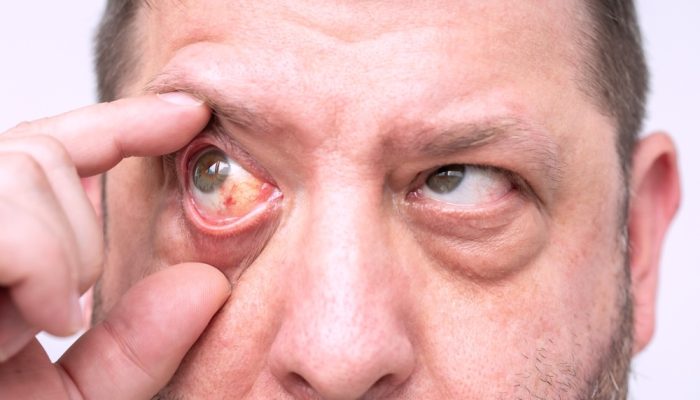
Cocaine eyes are a common physical manifestation of cocaine use and spotting them can help identify potential abuse.
You’re here reading this because you probably have noticed some physical changes on the eyes of a friend or a loved one. Perhaps you’re wondering if it could be a sign of drug use, particularly cocaine. Are the strange changes on their eyes just a coincidence or is it something more serious? Should you be worried that your loved one may be using cocaine?
Cocaine use has various physical manifestations, and changes in the eyes are among the most noticeable. The term “cocaine eyes” was coined to refer to the collection of signs and symptoms that occur in the eyes due to cocaine use.
These changes are not exclusive to cocaine users, but they can be a strong indicator of drug use. Here are five signs to look out for cocaine eyes.
1. Dilated pupils
One of the most recognizable signs of cocaine use is dilated pupils. Cocaine is a stimulant that affects the central nervous system, causing the pupils to enlarge abnormally. This condition, often referred to as “cocaine pupils,” makes the eyes more sensitive to light and can also impair vision. When the pupils are dilated, they may not respond to changes in lighting conditions as quickly as normal, which could be an indicator of substance abuse.
However, it’s important to note that having dilated pupils is not a definitive sign of cocaine use. There are other factors that can cause this condition, such as certain medications and even natural changes in the body. While it is one of the symptoms of cocaine eyes, try to look for other signs as well before jumping to conclusions.

2. Red or bloodshot eyes
Another sign linked to cocaine use is bloodshot or red eyes. Cocaine causes the blood vessels in the eyes to constrict and then expand, leading to redness and irritation. The capillaries in the eyes may appear more pronounced, giving the eyes a bloodshot look. This side effect can be intensified by smoking cocaine, which introduces harmful chemicals directly to the eyes and surrounding tissues.
Long-term cocaine use can lead to eye conditions such as corneal ulcers and other forms of eye irritation. Over time, these eye-related symptoms can worsen, leading to more severe eye conditions that require medical attention.
3. Erratic eye movements
Nystagmus, or erratic eye movements, is another symptom associated with cocaine use. This condition involves involuntary, rapid movements of the eyes, which can make it difficult for individuals to focus on a single point. Cocaine affects the brain’s control over eye movement, leading to this unusual and noticeable behavior.
Erratic eye movements are a direct result of the stimulant effects of cocaine. The drug disrupts the normal functioning of the brain’s neurotransmitters, which control eye movement and coordination. This disruption can lead to nystagmus, making it a sign of cocaine intoxication and could be a tell-tale indicator of substance abuse.
4. Sensitivity to light

Increased sensitivity to light, also known as photophobia, is another sign of cocaine use. When someone is under the influence of cocaine, their eyes become more sensitive to light due to dilated pupils and other changes in eye function. This can make it uncomfortable for them to be in brightly lit environments and can cause them to squint or avoid light sources.
The drug’s impact on the pupils and the eyes’ ability to regulate light makes this symptom highly noticeable. If someone shows a sudden aversion to light or complains about their eyes being sensitive in conjunction with other unusual symptoms, it could be cocaine eyes.
5. Eyes looking irritated
Lastly, cocaine use can cause the eyes to appear irritated and unhealthy. This irritation can manifest as redness, dryness, and a general look of discomfort. The combination of dilated pupils, bloodshot eyes, and erratic movements can make the eyes look visibly strained and unhealthy.
The irritative effects of cocaine on the eyes occur because the drug causes significant vasoconstriction and dryness, affecting the eyes’ natural lubrication and health. Long-term use of cocaine can lead to chronic irritation, making this one of the more persistent signs of cocaine addiction.
Best cocaine rehab in Beverly Hills, CA
Recognizing the signs of cocaine eyes can be helpful in identifying potential substance abuse. If you suspect that a loved one may be using cocaine, it is important to approach the situation with care and seek professional help. Understanding these symptoms can be the first step towards getting them the support they need.
At Safe Haven Recovery in Beverly Hills, we offer the best treatment programs for cocaine abuse in California. Our luxurious residential facility provides a supportive and comfortable environment for individuals to heal and recover from addiction. Reach out to us today and let our team of compassionate addiction specialists guide you towards recovery.









